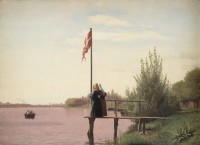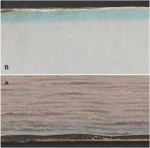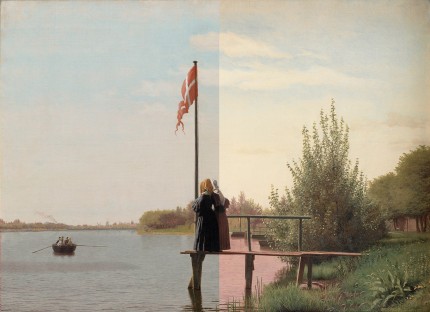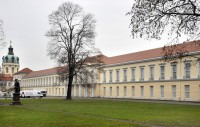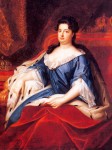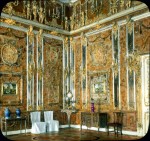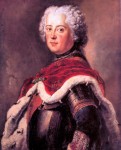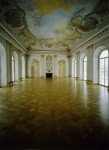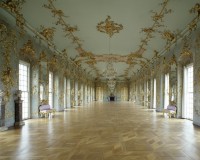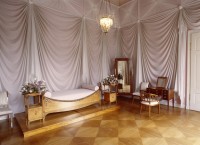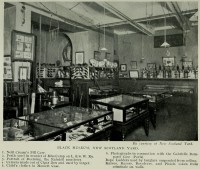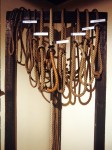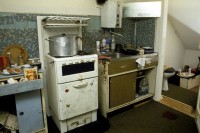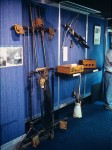And so another year ends and a new one dawns. As has become customary, I shall pay Janus his due by looking back at the Year in History Blog History. Statistically speaking, it has been a rich year, with nearly 1,600,000 total pageviews. In June we passed the milestone of 5,000,000 total pageviews since stats were installed in 2009. We’ll end the year just 85,000 or so views short of the six million mark which, fair warning, I plan to celebrate with some sort of Steve Austin reference.
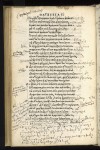 I was delighted to see statistical support for one of my little follies this year. Some of you mocked my love for the world’s oldest eel when I blogged about his demise at the venerable age of 155 this August, but it turns out we Åle appreciators are legion. That entry was the most viewed new post of the year with 13,582 views. (Brundage’s sex flowchart from the Medieval penitentials, a perpetual favorite since I first posted it in 2010, was the most viewed of the year with 16,831 views.) The second most viewed new entry this year was a surprise: the deciphering of the French shorthand annotations in the 1504 edition of Homer’s Odyssey printed in Venice by Aldus Manutius. People dig puzzles, man, and that wasn’t the only article about shorthand to get tons of attention this year.
I was delighted to see statistical support for one of my little follies this year. Some of you mocked my love for the world’s oldest eel when I blogged about his demise at the venerable age of 155 this August, but it turns out we Åle appreciators are legion. That entry was the most viewed new post of the year with 13,582 views. (Brundage’s sex flowchart from the Medieval penitentials, a perpetual favorite since I first posted it in 2010, was the most viewed of the year with 16,831 views.) The second most viewed new entry this year was a surprise: the deciphering of the French shorthand annotations in the 1504 edition of Homer’s Odyssey printed in Venice by Aldus Manutius. People dig puzzles, man, and that wasn’t the only article about shorthand to get tons of attention this year.
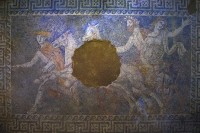 Probably the biggest story of the year in terms of sheer media saturation was the excavation of the great Kasta tumulus in Amphipolis. There were so many developments in quick succession that I had to restrain myself from posting about them daily. As it is I covered the initial discovery of the mosaic, the reveal of the Persephone portion, the discovery of what may or may not be the head of one of the entrance sphinxes and lastly of the human remains. Little stories are still cropping up even though the excavation is over for now, but I’m holding back until we get some concrete news.
Probably the biggest story of the year in terms of sheer media saturation was the excavation of the great Kasta tumulus in Amphipolis. There were so many developments in quick succession that I had to restrain myself from posting about them daily. As it is I covered the initial discovery of the mosaic, the reveal of the Persephone portion, the discovery of what may or may not be the head of one of the entrance sphinxes and lastly of the human remains. Little stories are still cropping up even though the excavation is over for now, but I’m holding back until we get some concrete news.
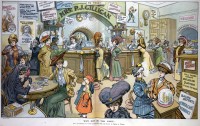 Most enjoyable reasearch rabbit hole award goes to the backstory of the 1908 cartoon illustrating the dire consequences of women being allowed to smoke in public establishments. I had a wonderful time digging through the period newspaper articles about the controversy that exploded at the end of 1907 over the prospect of women being allowed to smoke in the public rooms of the trendy Fifth Avenue French restaurant Café Martin. The story has everything: women’s rights, European sophisticates versus US pearl-clutchers, a deeply corrupt politician who had knocked up at least a half-dozen dance hall girls and would soon die of syphilis lecturing women about moral behavior, and best of all, a fantasy vision of a bar filled with liberated ladies doing naughty things under the shadow of a free fudge and almonds buffet.
Most enjoyable reasearch rabbit hole award goes to the backstory of the 1908 cartoon illustrating the dire consequences of women being allowed to smoke in public establishments. I had a wonderful time digging through the period newspaper articles about the controversy that exploded at the end of 1907 over the prospect of women being allowed to smoke in the public rooms of the trendy Fifth Avenue French restaurant Café Martin. The story has everything: women’s rights, European sophisticates versus US pearl-clutchers, a deeply corrupt politician who had knocked up at least a half-dozen dance hall girls and would soon die of syphilis lecturing women about moral behavior, and best of all, a fantasy vision of a bar filled with liberated ladies doing naughty things under the shadow of a free fudge and almonds buffet.
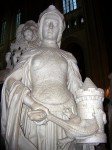 Not as playful but perhaps even more compelling was the life story of Anne of Brittany explored on the occasion of the 500th anniversary of her death. She was so young when she had to lead men-at-arms and hurtle head-first into political gamesmanship with kings and emperors to save the independence of her homeland. The only woman to ever be queen of France twice, from the age of 14 until her death at 36, she was pregnant at least 14 times with only two daughters surviving. Between all that, she somehow she found the time to rule her duchy and introduce the art and philosophy of Renaissance humanism to France. The tomb she commissioned for her father, Duke Francis II, was the first work in the Renaissance style done in France, and since I didn’t post this in the original entry, I’m taking the opportunity now to glory in the phenomenal carving of the allegory of Courage defeating the dragon of Evil/Discord which as attacked the tower of Good/Conscience. All the sculptures on the tomb are exceptional, but I am completely obsessed with that dragon.
Not as playful but perhaps even more compelling was the life story of Anne of Brittany explored on the occasion of the 500th anniversary of her death. She was so young when she had to lead men-at-arms and hurtle head-first into political gamesmanship with kings and emperors to save the independence of her homeland. The only woman to ever be queen of France twice, from the age of 14 until her death at 36, she was pregnant at least 14 times with only two daughters surviving. Between all that, she somehow she found the time to rule her duchy and introduce the art and philosophy of Renaissance humanism to France. The tomb she commissioned for her father, Duke Francis II, was the first work in the Renaissance style done in France, and since I didn’t post this in the original entry, I’m taking the opportunity now to glory in the phenomenal carving of the allegory of Courage defeating the dragon of Evil/Discord which as attacked the tower of Good/Conscience. All the sculptures on the tomb are exceptional, but I am completely obsessed with that dragon.
Probably the most enjoyable post to write was the one about how Misty the Diplodocus lead researchers to discover 55 barnacle specimens assembled, labeled and presented to a Danish colleague by Charles Darwin himself. From the teenagers who beat their dad to the money dinosaur fossils to the Darwin expert with specific knowledge of his fossil trades being in charge of finding specimens for the Natural History Museum of Denmark’s Misty-inspired exhibition, it was such a randomly fortuitous chain of events.
I also loved learning more about the Adena Mound in Chillicothe, Ohio, which at the beginning of the year was the radiocarbon dated to the first century A.D. The history of the mound is a sad one — it suffered the fate of so many of its brethren when it was busted down to nothing in 1901 so the land could be farmed — but the excavation that destroyed it also saved the small fragments of tree bark that made the dating possible now that the technology is advanced enough to work with tiny samples.
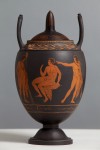 Speaking of the dire fate of Ohio earthworks, it was averted for the Hopewell Junction Group earthworks also in Chillicothe. The non-profit Arc of Appalachia was able to purchase 193 acres covering the earthworks after just eight frenetic days of fundraising. It wasn’t the only fundraising triumph this year. The Art Fund’s campaign to acquire the unparalleled artistic and industrial archive that is the Wedgwood Collection succeeded in record time, raising £2.74 million in three weeks.
Speaking of the dire fate of Ohio earthworks, it was averted for the Hopewell Junction Group earthworks also in Chillicothe. The non-profit Arc of Appalachia was able to purchase 193 acres covering the earthworks after just eight frenetic days of fundraising. It wasn’t the only fundraising triumph this year. The Art Fund’s campaign to acquire the unparalleled artistic and industrial archive that is the Wedgwood Collection succeeded in record time, raising £2.74 million in three weeks.
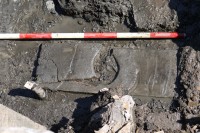 One of my favorite finds of the year was the Roman wooden toilet seat unearthed at Vindolanda. Roman sites all over the former empire are lousy with stone toilet seats, but this is the first wooden one known to have survived thanks to the waterlogged soil of Northumberland. There’s an update to this story that is almost as awesome as the original. Tosca and Willoughby, makers of very upmarket custom toilet seats for the discerning and well-moneyed butt, pledged to create a special edition of their luxury Thunderbox line of wooden toilet seats and donate some of the proceeds to the Vindolanda Trust to help defray the cost of preservation.
One of my favorite finds of the year was the Roman wooden toilet seat unearthed at Vindolanda. Roman sites all over the former empire are lousy with stone toilet seats, but this is the first wooden one known to have survived thanks to the waterlogged soil of Northumberland. There’s an update to this story that is almost as awesome as the original. Tosca and Willoughby, makers of very upmarket custom toilet seats for the discerning and well-moneyed butt, pledged to create a special edition of their luxury Thunderbox line of wooden toilet seats and donate some of the proceeds to the Vindolanda Trust to help defray the cost of preservation.
“We are absolutely fascinated by the discovery of a perfectly-preserved ancient loo seat,” said James Williams, the Director of the company whose money will maintain the chemical conservation of the artefact.
“As our own seats are handcrafted, we admire the Roman craftsmanship which, in this case, has certainly stood the test of time.”
There is not one part of that I don’t love, and it’s a fine thematic companion to the barrels of 700-year-old human excrement excavated in Odense, Denmark.
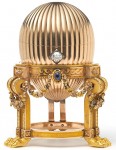 In the fever dreams caused by excessive viewings of Antiques Roadshow category, you can’t beat the midwestern scrap metal dealer who found a lost Fabergé Imperial Eater Egg, bought it purely for its precious metal content and then refused to melt it down when everyone told him he’d overpaid. If he hadn’t been so stubborn, and if he hadn’t happened to have Googled the Vacheron clock inside the egg which led him to a 2011 article about a newly rediscovered auction photograph of the egg from 1964, this priceless historical artifact would have been converted into a few thousand dollars worth of molten metal and disappeared forever.
In the fever dreams caused by excessive viewings of Antiques Roadshow category, you can’t beat the midwestern scrap metal dealer who found a lost Fabergé Imperial Eater Egg, bought it purely for its precious metal content and then refused to melt it down when everyone told him he’d overpaid. If he hadn’t been so stubborn, and if he hadn’t happened to have Googled the Vacheron clock inside the egg which led him to a 2011 article about a newly rediscovered auction photograph of the egg from 1964, this priceless historical artifact would have been converted into a few thousand dollars worth of molten metal and disappeared forever.
I also loved seeing the replica of a 24-pound bronze cannon from the Vasa, the Swedish warship that sank on its maiden voyage in 1628, shot. The smoke, the recoil, the sound, the exploding wood fragments when the ball makes contact with the replica section of the Vasa‘s hull, brings to vivid life the chaotic scariness of 17th century nautical battles. As if that weren’t neat enough, Fred Hocker, Director of the Vasa Cannon Project, popped into the comments to answer people’s questions and generally be the coolest guy in the house.
 It was a great year for textiles. There was the recreation of the Iron Age woolen tunic found in a melting glacier in Norway, the altar frontal hand-embroidered by World War I soldiers as occupational therapy during their convalescence, the oldest known trousers found in China, the return of the 2,000-year-old Paracas textiles from Sweden to Peru, and the gloriously beautiful Veldman-Eecen Collection of 18th century Indian chintz garments acquired by the Peabody Essex Museum.
It was a great year for textiles. There was the recreation of the Iron Age woolen tunic found in a melting glacier in Norway, the altar frontal hand-embroidered by World War I soldiers as occupational therapy during their convalescence, the oldest known trousers found in China, the return of the 2,000-year-old Paracas textiles from Sweden to Peru, and the gloriously beautiful Veldman-Eecen Collection of 18th century Indian chintz garments acquired by the Peabody Essex Museum.
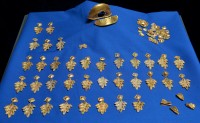 It was a great year for hoards, too. There was the hoard of Byzantine gold coins found in the Netherlands’ northeastern Drenthe province, the jewelry hoard hidden in Colchester to keep it safe from Boudicca’s army descending upon the city, the Dumfries Viking Hoard and its fascinating Carolingian pot stuffed with additional treasures, and the gorgeous pyramid-and-leaf late Roman gold fittings from a ceremonial robe that were confiscated from a looter in Germany. The United States got into the game in a big way this year, thanks to the discovery of the Saddle Ridge Hoard of mint-condition gold coins from the mid-to-late 1800s.
It was a great year for hoards, too. There was the hoard of Byzantine gold coins found in the Netherlands’ northeastern Drenthe province, the jewelry hoard hidden in Colchester to keep it safe from Boudicca’s army descending upon the city, the Dumfries Viking Hoard and its fascinating Carolingian pot stuffed with additional treasures, and the gorgeous pyramid-and-leaf late Roman gold fittings from a ceremonial robe that were confiscated from a looter in Germany. The United States got into the game in a big way this year, thanks to the discovery of the Saddle Ridge Hoard of mint-condition gold coins from the mid-to-late 1800s.
I think my favorite overall post of the year was the interview with maker of historical fonts Brian Willson of Three Island Press. He’s as generous and he is brilliant, his work is exceptional and if the New Year brings us a Nestler font, then I will consider it to have been one of the greatest on record.
Thank you once more for reading and commenting and emailing me tips to juicy history stories. Truly you are the bestest. May all your 2015s be replete with metaphoric (or literal!) gold hoards, shorthand mysteries and buffet tables groaning with fudge and almonds.
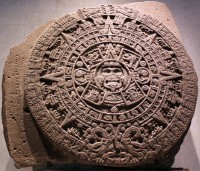 On Wednesday, December 17th, Mexico City celebrated the 224th anniversary of the rediscovery of the Aztec Sun Stone, the basalt monolith carved under the reign of Moctezuma II just a few years before the Spanish conquest. The circular stone, 12 feet in diameter and weighing more than 24 tons, was originally painted in brilliant red, blue, yellow and white. Archaeologists believe it was placed on top of the main platform of the Templo Mayor in Tenochtitlan (modern-day Mexico City), perhaps initially intended to be a sacrificial altar but then erected vertically when the massive stone cracked so it was no longer the thick drum-shape of traditional altars.
On Wednesday, December 17th, Mexico City celebrated the 224th anniversary of the rediscovery of the Aztec Sun Stone, the basalt monolith carved under the reign of Moctezuma II just a few years before the Spanish conquest. The circular stone, 12 feet in diameter and weighing more than 24 tons, was originally painted in brilliant red, blue, yellow and white. Archaeologists believe it was placed on top of the main platform of the Templo Mayor in Tenochtitlan (modern-day Mexico City), perhaps initially intended to be a sacrificial altar but then erected vertically when the massive stone cracked so it was no longer the thick drum-shape of traditional altars. 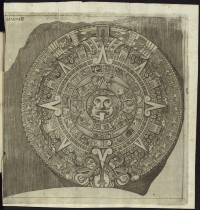 After the fall of Tenochtitlan in 1521, Hernán Cortés ordered all Aztec religious icons removed and replaced them with Christian ones. The Sun Stone was toppled and dumped carved side up on the Zócalo, the main square of Mexico City. A few decades later, Archbishop Alonso de Montúfar, the second Archbishop of Mexico, ordered the stone, which he considered an evil, satanic influence on the city’s residents, flipped carved side down and buried. There it remained entirely forgotten until December 17th, 1790, when it was unearthed less than two feet under the surface by workers repaving the square. They propped it upright next to the find spot.
After the fall of Tenochtitlan in 1521, Hernán Cortés ordered all Aztec religious icons removed and replaced them with Christian ones. The Sun Stone was toppled and dumped carved side up on the Zócalo, the main square of Mexico City. A few decades later, Archbishop Alonso de Montúfar, the second Archbishop of Mexico, ordered the stone, which he considered an evil, satanic influence on the city’s residents, flipped carved side down and buried. There it remained entirely forgotten until December 17th, 1790, when it was unearthed less than two feet under the surface by workers repaving the square. They propped it upright next to the find spot.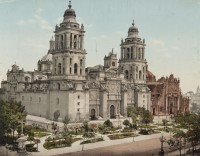 It was Antonio de León y Gama who rescued the stone from further disrespect. The Viceroy of New Spain and the Church wanted to use the stone as a step leading up to the entrance of the Metropolitan Cathedral of the Assumption of Mary, the church built in the shadow of the Templo Mayor ruins 20 years or so after Archbishop Alonso de Montúfar had ordered the Sun Stone buried for its satanism. Letting parishioners stomp their dirty shoes all over a sacred Aztec artifact would have been a satisfying symbol of the triumph of Christianity over paganism. It also would have been a conservation disaster. León y Gama persuaded Viceroy Juan Vicente de Güemes, 2nd Count of Revillagigedo, that since the stone wasn’t really a pagan idol like the statue of Coatlicue, but rather a calendar, it should be properly displayed, not trampled. The stone placed on the exterior wall of the Cathedral’s southwest tower where it became a popular attraction known as “Montezuma’s Clock.”
It was Antonio de León y Gama who rescued the stone from further disrespect. The Viceroy of New Spain and the Church wanted to use the stone as a step leading up to the entrance of the Metropolitan Cathedral of the Assumption of Mary, the church built in the shadow of the Templo Mayor ruins 20 years or so after Archbishop Alonso de Montúfar had ordered the Sun Stone buried for its satanism. Letting parishioners stomp their dirty shoes all over a sacred Aztec artifact would have been a satisfying symbol of the triumph of Christianity over paganism. It also would have been a conservation disaster. León y Gama persuaded Viceroy Juan Vicente de Güemes, 2nd Count of Revillagigedo, that since the stone wasn’t really a pagan idol like the statue of Coatlicue, but rather a calendar, it should be properly displayed, not trampled. The stone placed on the exterior wall of the Cathedral’s southwest tower where it became a popular attraction known as “Montezuma’s Clock.”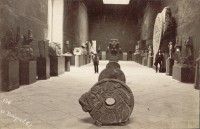 The Aztec Sun Stone stayed on the Cathedral until 1882 when it was moved along custom-built tracks two blocks to the new National Museum. Three years after that it moved the museum’s Gallery of Monoliths. In 1964, the Sun Stone was moved one last time, to the newly built National Museum of Anthropology. Now the museum can celebrate its own 50 year anniversary, the 50th anniversary of the Sun Stone’s final move and the 224th anniversary of the stone’s rediscovery all at the same time.
The Aztec Sun Stone stayed on the Cathedral until 1882 when it was moved along custom-built tracks two blocks to the new National Museum. Three years after that it moved the museum’s Gallery of Monoliths. In 1964, the Sun Stone was moved one last time, to the newly built National Museum of Anthropology. Now the museum can celebrate its own 50 year anniversary, the 50th anniversary of the Sun Stone’s final move and the 224th anniversary of the stone’s rediscovery all at the same time.








